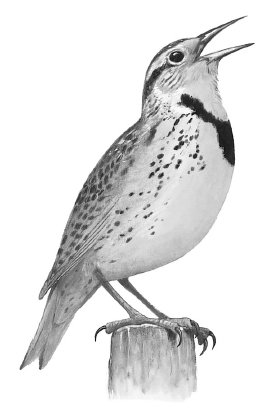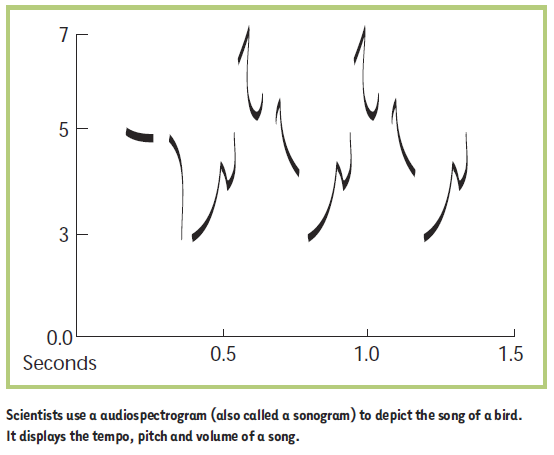Objectives
Students will:
- know that each species usually has two or more distinct songs;
- learn what birdsongs mean to other birds; and
- learn to identify some local birds by their songs.
Method
Students will become familiar with some common birdsongs and their meanings.
Materials
a tape recorder or CD player and a tape or CD of local birdsongs
Background

In spring, the main purpose of a bird's song is to stake out territory and to attract a mate. A male bird starts by marking out the invisible borders of his territory—then defends those borders from other birds of the same species with his song. To them, the song clearly means "No trespassing, Buster!" The male chooses a singing spot where he can be heard clearly, such as a treetop or a post.
Once he’s mapped out his territory, the male does his best to attract a mate. He uses his bright feathers, a special dance, or a song, or sometimes all three, to woo the female. The male’s song probably conveys details about his size, health, and social status to tempt a female—but there is much we don’t know about birdsongs.
A great way to identify birds is by learning their songs. Each species usually has two or more songs. With practice, the variations and general patterns can be recognized by a sharp-eared ornithologist. Sometimes people remember songs by creating words to fit the sound. For instance, a white-throated sparrow seems to be saying "I love Canada, Canada, Canada." Students can make up their own words to birdsongs.
Procedure
- Find or borrow a good-quality CD or tape of local birdsongs. The local naturalists' club is a good source for this item. Invite a member of the group to give a presentation on birdsongs.
- Choose eight or ten songs of common birds in your area. Play each several times for students. Name each species and hold up its photograph while its song is playing.
- After each song is played, have students discuss the quality of the song: Is it musical, harsh, or bubbly? What words match the song?
- When students are familiar with the songs, play them again without using the bird images. Have students call out their answers.
Extensions
- Take students out for a field excursion to practise their listening skills on birdsongs.

Copyright Notice
© Canadian Wildlife Federation
All rights reserved. Web site content may be electronically copied or printed for classroom, personal and non-commercial use. All other users must receive written permission.






